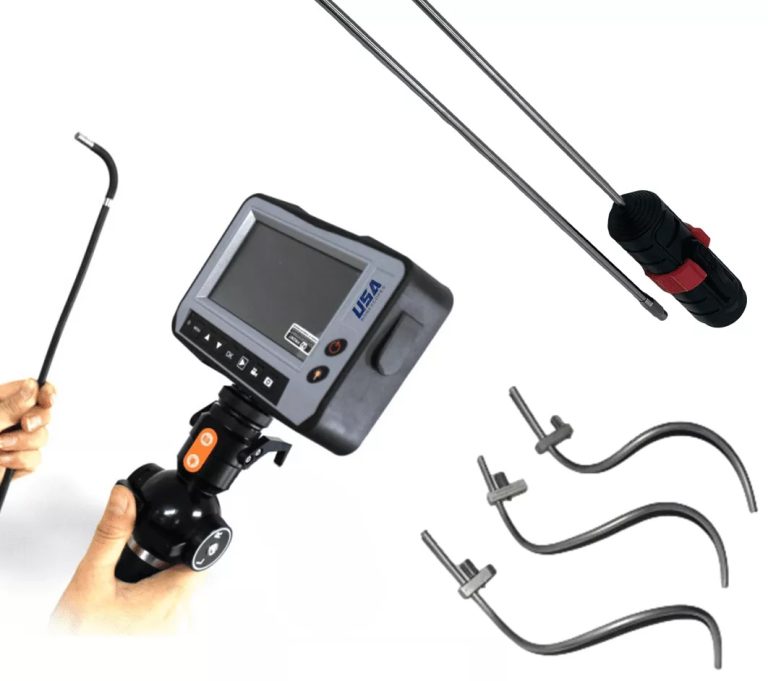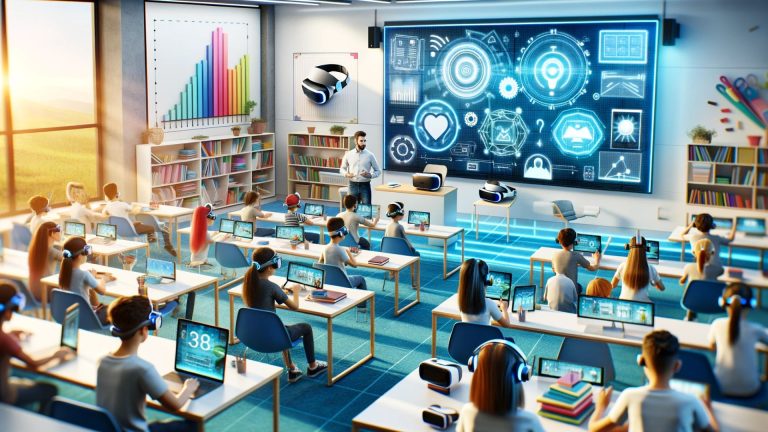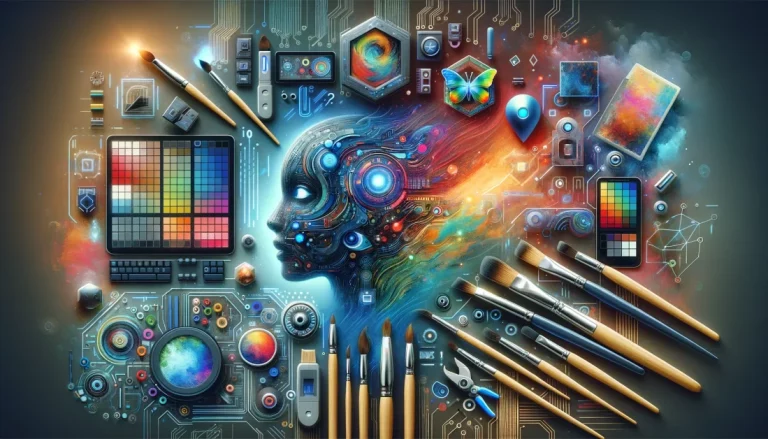Enhance Your Computing Experience: A Comprehensive Guide to Computer Peripheral
Computer peripherals are auxiliary devices used to put information into and get information out of the computer, enhancing its functionality.
Computer peripherals complement the functions of a computer, enhancing its capability, usage, and user experience and enabling diverse tasks like printing, scanning, and data storage.
Overview of Different Types of Computer Peripherals
Input Devices
Input devices are essential hardware tools used to input data and instructions into a computer. Examples of these computer peripherals include a keyboard, mouse, scanner, and microphone.
Keyboard
A keyboard is an essential input device used to type data, commands, and instructions into a computer or other digital device.
Mouse
A mouse is a small mammal, typically characterised by a pointed snout, small round ears, and a slender, furry body with a long tail.
Microphone
A microphone is a technological device that captures sound waves and converts them into electrical signals for amplification, recording, or broadcasting.
Gaming Controllers
Gaming Controllers are an integral part of the gaming experience, turning pressable buttons into interactive, immersive gameplay magic.
Output Devices
Output devices are essential computer hardware that presents information to users in understandable formats like visuals, hardcopy, audio, or tactile feedback.
Monitor
A monitor is an output device featuring a screen that displays information in visual form, which is crucial for interfacing with a computer system.
Printer
A printer is a peripheral device that produces a hard copy of documents stored in electronic form, often connecting to computers.
Speakers
Speakers are essential devices that convert electrical signals into sound, allowing us to listen to music, podcasts, movies, or live broadcasts.
Storage Devices
Storage devices are hardware units that contain and retrieve data. They include internal and external hard drives, flash drives, and solid-state drives.
Hard Drives
Hard drives are primary storage devices in computers, known for their excellent storage capacities. They securely store and retrieve digital content, ensuring data longevity and safety.
SSDs
SSDs, or solid-state drives, offer faster processing speeds compared to traditional hard drives. They store data persistently and afford shorter boot times.
Flash Drives
Flash drives are portable storage devices used for transferring data between computers. They are compact, fast, reliable, and require no internet connection.
Connectivity Devices
Connectivity devices facilitate communication between computers, enabling data transfer and sharing. They include modems, routers, switches, hubs, and network interface cards.
Internet Modems
Internet modems are crucial devices that convert digital signals into analogue for transfer over telephone or cable lines, enabling online connectivity.
Wireless Routers
Wireless routers enable devices to connect to the internet without cables, providing convenient, mobile access within a certain range.
Choosing the Right Computer Peripherals
Identifying Needs and Preferences
Identifying needs and preferences is crucial in understanding and satisfying customers. It guides business decisions, ensuring products meet client expectations.
Compatibility with Existing Hardware
Compatibility with existing hardware allows for easy integration and functionality, preventing unnecessary expenses associated with replacing entire systems.
Affordability versus Quality
Balancing affordability and quality is crucial. While cost-effective solutions are appealing, compromising quality can lead to future expenses and disappointments.
Brand Reputation and Reviews
Brand reputation and reviews greatly influence consumer decisions, contributing to a business’s success or setback. They are integral to gaining consumer trust and loyalty.
Detailed Review and Comparison of Popular Computer Peripherals
Top choices for Keyboards
Mechanical keyboards with customisable switches are top choices for gamers. Logitech, Corsair, and Razer provide excellent typing experience and durability.
Best Mice for Various Tasks
Ergonomically designed mice, such as the Logitech MX Master 3, are ideal for intensive tasks, while gaming mice like Razer DeathAdder offer precision control.
Printer: selecting based on needs
When selecting a printer, consider your needs, such as printing speed, quality, colour (black or white), and cartridge cost efficiency.
Finding the Right Monitor
Finding the right monitor involves considering screen size, resolution, response time, refresh rates, and connectivity options to match your tech needs.
Essential Storage Devices
Essential storage devices like hard drives, SSDs, and USB flash drives are crucial for safely storing and retrieving digital information effortlessly.
High-Quality Connectivity Devices
High-quality connectivity devices are essential for fast, reliable internet access. They help reduce lag, improve functionality and allow seamless communication and data transfer.
Enhancing Computing Experience Using Peripherals
Impact on Productivity
Increased efficiency through technological advancements and skill development can significantly enhance productivity, benefiting corporate profitability and economic growth.
Impact on Gaming Experience
Advanced technology significantly enhances the gaming experience, offering immersive virtual realities, improved graphics, interactive gameplay, and more personalised user engagement.
Impact on Digital Art & Design
Digital art and design have significantly transformed the art sector. It has enhanced creativity and accessibility and introduced new concepts like NFTs, revolutionising how artists profit from their work.
Impact on Media Consumption
The digital age has significantly transformed media consumption, leading to increased accessibility, interactivity, and diversity, yet also raising concerns about misinformation.
Maintenance and Care of Computer Peripherals
Regular Cleaning
Regular cleaning promotes a healthy lifestyle by reducing dust, bacteria, and allergens, ultimately creating a hygienic and visually pleasing environment.
Proper Usage and Storage
Proper usage and storage are crucial for enhancing product efficiency and longevity and maintaining safety standards, especially with electronics and perishables.
Regular Updating or replacement of Older Peripherals
Regular updating or replacing older peripherals ensures optimal performance, efficiency, and compatibility with modern technology and software systems.
Troubleshooting Common Peripheral Issues
Connectivity Problems
Connectivity problems can cause significant disruptions, affecting productivity in businesses. They primarily stem from poor network design, maintenance, or technological infrastructure issues.
Hardware Malfunctions
Hardware malfunctions are issues affecting the physical parts of a computer. They can cause crashes, data loss, and decreased performance, often requiring professional assistance for resolution.
Software-related Issues
Software-related issues are often catastrophic, affecting system functionality and productivity, and typically require technical expertise for resolution and prevention.
Future Trends in Computer Peripherals
Role of Virtual Reality and Augmented Reality
Virtual reality and augmented reality enhance the user experience, revolutionising sectors like education, healthcare, and gaming through immersive, interactive, and engaging 3D environments.
Advances in Wireless Technology
Advances in wireless technology have exponentially increased connectivity, enabling seamless communication and improved IoT functionality, and have significantly revolutionised the digital industry.
Impact of Machine Learning and AI
Machine learning and AI significantly transform industries, enhancing efficiency while unlocking new opportunities and capabilities previously unimaginable in a traditional setup.
Computer peripherals FAQs
What are 5 peripherals?
Peripherals are external devices connected to a computer for specific functions. Examples include keyboards, mice, printers, scanners, and speakers.
Is a CPU a peripheral device?
No, a CPU is not a peripheral device. It’s the central processing unit of a computer, performing crucial functions, unlike peripherals such as printers.
What is meant by laptop peripherals?
Laptop peripherals are additional external devices, such as printers, scanners, keyboards, or mice, connected to enhance a laptop’s functionality.
What are the external peripherals?
External peripherals are hardware devices connected externally to a computer to enhance its abilities, such as printers, keyboards, and mice.
Stay in touch to get more updates & news on Discover Headline!







